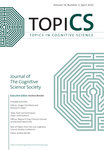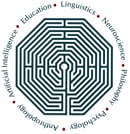Journal list menu
Export Citations
Download PDFs
Issue Information
Introduction
Introduction to topiCS Volume 14, Issue 2
- Pages: 212-213
- First Published: 10 April 2022
Topic: Everyday Activities — Editors: Holger Schultheis and Richard P. Cooper
Everyday Activities
- Pages: 214-222
- First Published: 15 February 2022
Much of behaviour consists of everyday activities — mundane tasks that are nevertheless essential such as dressing, grooming, commuting, and preparing meals. These activities are performed on a regular basis, in familiar environments, and in stereotyped ways, and often with limited overt attention. Yet from a cognitive perspective their production is surprisingly complex. This topic consists of eight papers that span different aspects of everyday activities, ranging from neuroscience through philosophical considerations and implications to lessons from robotics.
Neural Representations of Task Context and Temporal Order During Action Sequence Execution
- Pages: 223-240
- First Published: 09 April 2021
Routine action sequences critically rely on neural mechanisms maintaining contextual and temporal information to disambiguate similar tasks (e.g. making coffee or tea). In this study we show the involvement of areas in temporal and lateral prefrontal cortices in maintaining temporal and contextual information for the execution of hierarchically-organized action sequences.
The Development of Learning, Performing, and Controlling Repeated Sequential Actions in Young Children
- Pages: 241-257
- First Published: 14 June 2021
Yanaoka and Saito offer a review of developmental evidence about the routine system and its potential developmental mechanism and driving factors. They suggest that an investigation into the interplay between routine and executive functions can form foundations for understanding learning, performing, and controlling repeated sequential actions in young children.
Developmental Trajectories in the Understanding of Everyday Uncertainty Terms
- Pages: 258-281
- First Published: 22 July 2021
Taking a computational and developmental perspective, the authors trace a developmental trajectory in the understanding of natural language expressions of frequency and probability in 4- to 14-year-old children and adults. They find that the quantitative estimates of children converge to those of adults from around 9 years on.
Oops! I Did it Again: The Psychology of Everyday Action Slips
- Pages: 282-294
- First Published: 17 June 2021
This paper argues that a proper understanding of action slips, and thus intentional action more generally, requires an understanding of the control structure that implements an agent's guiding intentions. An account of this structure is then offered, central to which are motor representations that are active downstream of intention and attentional processes that ensure that they reliably implement the intentions they serve.
Similarities between Cognitive Models of Language Production and Everyday Functioning: Implications for Development of Interventions for Functional Difficulties
- Pages: 295-310
- First Published: 14 June 2021
Mis and Giovannetti argue that theoretically motivated interventions for aphasia can serve as an instructive paradigm for the development of interventions to improve everyday functioning in older adults. They discuss existing aphasia interventions and hypothesized parallel targets in action based on shared characteristics between cognitive models of language and everyday action.
A Critical Period for Robust Curriculum-Based Deep Reinforcement Learning of Sequential Action in a Robot Arm
- Pages: 311-326
- First Published: 10 January 2022
In a sequential reaching task, a robot arm trained using deep reinforcement learning optimizes its behavior in a similar manner to humans. This so-called centering behavior, however, only tends to develop when learning is performed in a curriculum in which the reward function becomes increasingly complex over time. Furthermore, the onset of the curriculum seems to have a sensitive period, with too early or too late onset leading to unstable or suboptimal performance.
A Robotic Cognitive Control Framework for Collaborative Task Execution and Learning
- Pages: 327-343
- First Published: 26 November 2021
We provide a uniform overview of a robotic cognitive control framework discussing the potential of the proposed approach in different scenarios where humans and robots collaborate for learning and executing everyday activities.
Action Selection and Execution in Everyday Activities: A Cognitive Robotics and Situation Model Perspective
- Pages: 344-362
- First Published: 30 August 2021
We show how the CRAM cognitive architecture allows a robot to carry out simple everyday activities and show how it can be extended by leveraging insights from the situation model perspective on the cognitive mechanisms underlying flexible context-sensitive behavior.
Topic Continuation: Tasks, Tools and Techniques — Editors: Wayne D. Gray, François Osiurak and Richard Heersmink
The Tools of Enculturation
- Pages: 363-387
- First Published: 27 February 2022
This article has two aims: First to present a case for the integration of cognitive tools into our cognitive systems as a process of Enculturation. Second, to present an argument against the simplifying account of cognitive tools as ‘offloading’ cognitive complexity, or ‘outsourcing’ cognitive processing to the tools themselves. We use an extensive case study of spatial navigation to demonstrate the core claims.
Topic: Best of Papers from the 2021 Cognitive Science Society Conference — Editor: Andrea Bender
Learning Communicative Acts in Children's Conversations: A Hidden Topic Markov Model Analysis of the CHILDES Corpora
- Pages: 388-399
- First Published: 16 December 2021
Characterizing the dynamics of children's conversations across development, using a Hidden Topic Markov Model to classify parents' and children's communicative acts and analyze their sequential structure in conversation.
Improving Medical Image Decision-Making by Leveraging Metacognitive Processes and Representational Similarity
- Pages: 400-413
- First Published: 05 December 2021
We compare methods of aggregating repeated decisions from a single decision maker to improve medical image decision making using metacognitive processes (confidence judgments) and representational similarity from artificial neural networks for both novice and expert participants.
Categorical Perception of p-Values
- Pages: 414-425
- First Published: 15 November 2021
Traditional statistics instruction and practice emphasize a p < .05 categorical boundary. Our results suggest a categorical perception-like effect for graduate students' processing of p-values, creating a psychologically real divide between so-called statistical ‘significance’ and ‘non-significance’.





